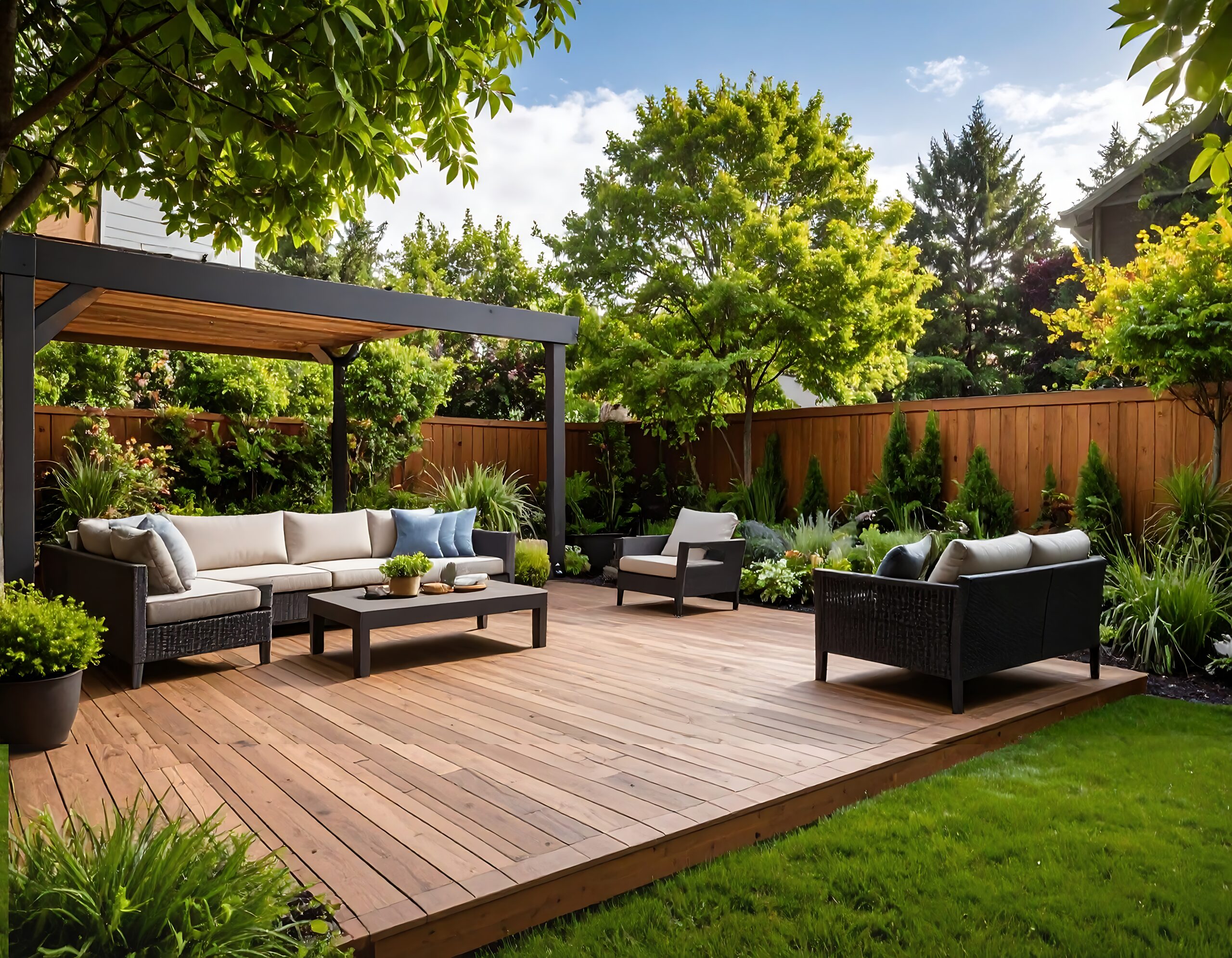When most people think about landscaping, their minds go straight to spring or summer—the times when flowers are in full bloom, trees are lush, and everything feels alive. But as a landscape designer, I see the beauty and potential in every season. I believe a well-designed outdoor space should offer something special 365 days a year. No matter the weather, your garden or yard should inspire, relax, and even surprise you.
This approach—designing for all four seasons—is central to the way I work. It’s about more than just planting pretty flowers. It’s about creating a sensory experience that evolves through the year, so your outdoor space feels alive and inviting, whether it’s July or January.
Every Season Has Its Moment
The first step to designing a year-round landscape is recognizing that every season has its own beauty. In spring, we naturally think of fresh blooms like tulips, daffodils, and cherry blossoms. Summer brings vibrant color, lush greenery, and fragrant herbs. Fall offers rich hues of gold, red, and orange, with ornamental grasses swaying in the breeze. And winter—often overlooked—can still be full of texture, shape, and even color if you plan it right.
When I design a space, I think about how it will look in each of these moments. My goal is to create a rhythm—something new unfolding with each change in season. This not only keeps the space interesting but also connects the homeowner more deeply with nature’s cycles.
Choosing the Right Plants
Plants are, of course, the foundation of any garden. But choosing plants that work for all seasons takes some planning. I mix evergreens, deciduous trees, perennials, and seasonal blooms to ensure there’s always something happening.
In winter, evergreens like boxwood, juniper, and holly keep the structure of the garden intact, offering green backdrops even in snow. Red-twig dogwood adds pops of color with its vibrant bark, and ornamental grasses stand tall, catching frost and light in beautiful ways.
Spring and summer bring more familiar blooms. I love layering plants so that as one finishes blooming, another takes its place. Early bloomers like snowdrops and crocuses give way to peonies and irises, which are followed by summer standouts like hydrangeas and daylilies.
Fall is a time for bold colors and interesting textures. Trees like maple and oak show off their autumn leaves, while sedum and mums add low-maintenance color. I often use ornamental grasses for their movement and sound—they rustle in the wind and bring a whole new dimension to the space.
A Sensory Experience
For me, landscaping is not just visual—it’s a full sensory experience. That means designing with scent, sound, and touch in mind. Lavender, rosemary, and thyme release calming aromas and are also practical, low-maintenance, and safe for kids and pets. Their scent lingers in the air and on your hands, making every visit to the garden a relaxing one.
Water features are another favorite of mine. The sound of trickling water creates a peaceful atmosphere and can help mask city noise. Even a small fountain can have a big impact.
Textures are important too—from the rough bark of a tree to the soft petals of a flower or the smooth surface of a stone. These small details invite people to touch, to linger, and to connect with the space in a deeper way.
Lighting for All Seasons
Good lighting can transform a garden, especially in the fall and winter when daylight is shorter. I use soft, low-voltage lighting to highlight key features like pathways, trees, or water elements. This extends the usability of the space into the evening hours and brings a warm, welcoming glow in the colder months.
Lighting also adds safety and dimension. A well-lit garden feels alive even at night, and you’ll notice how shadows play on leaves or how frost glistens under a gentle spotlight.
Low-Maintenance, Long-Term Beauty
One of the biggest concerns clients have is maintenance. They love the idea of a garden that blooms year-round but worry about the work involved. That’s where smart design comes in.
I focus on selecting plants that are hardy and suited to the space—ones that don’t need constant pruning or watering. I often use dwarf varieties of trees and shrubs to control growth, and I incorporate ground covers instead of traditional grass to cut down on mowing.
Water conservation is also key. By designing the landscape to capture and channel rainwater, we can reduce irrigation needs. Using mulch helps retain soil moisture and keeps plant roots protected through temperature changes.
The result is a space that not only looks great but is easy to care for. It ages gracefully, growing into itself over time rather than becoming overgrown or unmanageable.
A Space That Evolves With You
What I love most about designing for all seasons is that the space becomes a companion throughout the year. You’ll notice how it changes, how it reacts to the weather, how certain scents or colors return like old friends. It’s a living, breathing part of your home.
In a place like New York, where life moves fast and outdoor space is often limited, having a garden that grounds you and offers beauty year-round is something truly special. Whether you’re sipping coffee on a crisp fall morning, watching snow collect on evergreen branches, or enjoying the scent of summer herbs in the evening, your garden is always offering something new.
That’s the magic of designing for all seasons, and it’s what I strive to create in every project.
